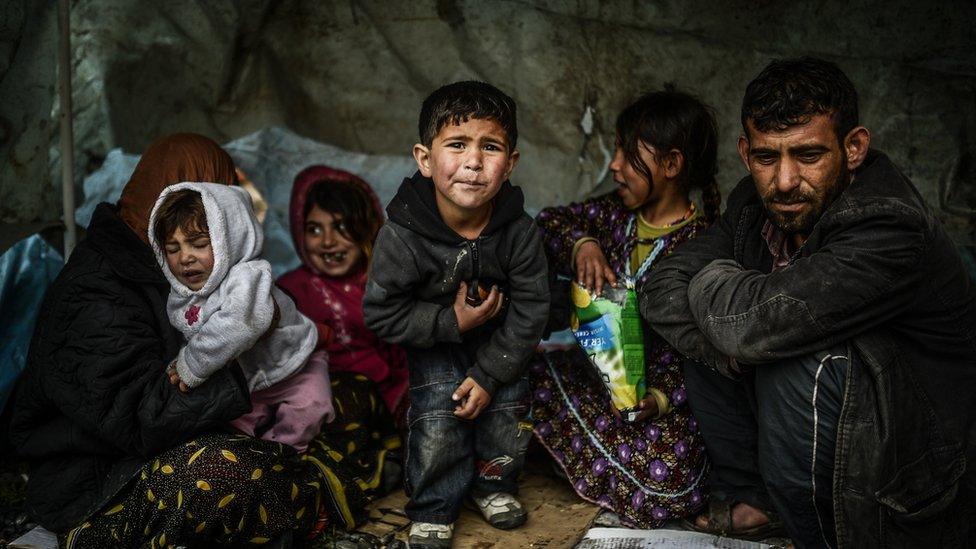Syrian refugees in the US explained in graphics
- Published

As the US debates whether the security risks of resettling Syrian refugees outweighs the desire to help those fleeing a brutal civil war, a look at some of the key statistics.
Millions of Syrians have fled their homeland during the past four years of conflict.
The majority poured into UN-run refugee camps in neighbouring countries at first, but in recent months many have taken dangerous sea journeys to Europe to seek asylum, prompting a migration crisis on the continent.
Facing pressure to do more, the Obama administration announced in September that it would increase the number of Syrian refugees it allows to resettle in the US over the next year. Here's what we know so far.

How many Syrian refugees have come to the US?
Refugee arrivals in the US
October 2011 to present
-
4,289,792 Syrian refugees registered with UNHCR
-
2,370 Syrian refugee arrivals in the US

Where have they gone?

What is the age and gender breakdown?
Age breakdown of Syrian refugee arrivals in the US
October 2011 to present
-
55.69% under 20
-
30.73% age 21 to 40
-
12.10% age 41 to 64
-
1.48% over 65
Gender breakdown of Syrian refugee arrivals in the US
October 2011 to present
-
47.05% female
-
52.95% male

How do they get here?
-
Leaving home & arrival at UNHCR refugee camp
×Fleeing the ongoing violence in Syria, refugees leave their homes to find camps that are often run by the UNHCR. In order to qualify for international resettlement, the refugee has to leave his or her country.
-
UNHCR referral for resettlement
×The UNHCR then determines which refugees qualify for resettlement. At that point, qualifying refugees are referred to specific countries.
-
Vetting process with US begins
×Refugees referred to the US then begin a lengthy screening process that can take from 18 months to two years.
-
Resettlement
×If the refugee passes all security screenings, he or she is then referred to one of nine NGOs that assist in placing them in the US.
For more detail: Step-by-step: how a Syrian refugee gets to the US

Where do other refugees come from?

A note on data sources: Most data is from the Worldwide Refugee Admissions Processing System (WRAPS, external), endorsed by the US State Department.
A note on terminology: The BBC uses the term migrant to refer to all people on the move who have yet to complete the legal process of claiming asylum. This group includes people fleeing war-torn countries such as Syria, who are likely to be granted refugee status, as well as people who are seeking jobs and better lives, who governments are likely to rule are economic migrants.